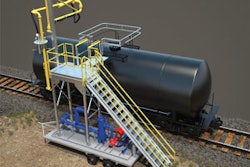Improved U.S. competitiveness and rising costs in China will put the United States in a strong position by around 2015 to eventually add 2 million to 3 million jobs and an estimated $100 billion in annual output in a range of industries, according to a new report by The Boston Consulting Group (BCG).
The report, titled U.S. Manufacturing Nears the Tipping Point: Which Industries, Why, and How Much?, is the latest in BCG’s ongoing study of the emerging reshoring or “insourcing” trend, conducted by its Operations and Global Advantage practices. It is published on www.bcgperspectives.com.
The report expands upon earlier BCG research released last year on the changing economics that are starting to favor manufacturing in the U.S. The first formal report, Made in America, Again: Why Manufacturing Will Return to the U.S., published in August, explained how 15 to 20 percent annual increases in Chinese wages and other factors were rapidly eroding China’s manufacturing cost advantage over the U.S. Then in October, BCG released a second set of findings identifying seven broad industry sectors that it said were most likely to reach a “tipping point” over the next five years — a point at which China’s shrinking cost advantage should prompt compa-nies to rethink where they produce certain goods meant for sale in North America.
The second formal report elaborates on those findings and explains the reshoring trend more fully. For example, it projects how much production work is likely to shift from China to the U.S. in each of the seven tipping-point sectors: transportation goods, appliances and electrical equipment, furniture, plastic and rubber products, machinery, fabricated metal products, and computers and electronics. It also predicts that production of 10 to 30 percent of U.S. imports from China in these sectors, which in 2010 accounted for nearly $200 billion worth of products, could move to the U.S.
The combination of manufacturing work returning from China in these sectors and increased U.S. exports due to improved global competitiveness is expected to create 2 million to 3 million U.S. jobs by the end of the decade. The job gains will come directly through added factory work (600,000 to 1 million jobs) and indirectly through supporting services, such as construction, transportation, and retail.
“Rising Chinese wages are only part of the reason America is poised for a manufacturing renaissance,” said Harold L. Sirkin, a BCG senior partner and coauthor of the report. “The U.S. manufacturing sector has gotten a lot more competitive over the past decade. And in recent years, companies have been paying much closer attention to the total costs of delivering a product made in China compared with making it closer to the end customer.” When higher U.S. productivity, logistics, and the many indirect risks and costs of sourcing products in China are taken into account, Sirkin said, more companies will find it makes good economic sense to make many products in the U.S. for consumption in North America.
Through its research, BCG has identified many companies — large and small — that have added or are planning to add U.S. production after assessing the total costs and risks. The latest report cites several, including ET Water Systems, a maker of irrigation controls; high-end cookware manufacturer All-Clad Metalcrafters; electronics manufacturing services company AmFor Electronics; and Farouk Systems, a maker of hair irons and dryers.
“This trend is still in the early stages,” stressed Michael Zinser, a BCG partner who leads the firm’s manufacturing work in the Americas. “But we expect it to accelerate as the new math of manufacturing increasingly favors the U.S. and as federal, state, and local governments provide more support for companies considering opportunities to reshore work.”
In another sign of growing American manufacturing competitiveness, foreign companies are adding capacity in the U.S. to serve both the domestic market and export markets. Electrolux recently decided to build a new plant in Memphis, Tennessee; and Bridgestone, Toyo Tires, and Continental Corporation all have announced plans to add U.S. capacity to manufacture vehicle tires. “Companies are unveiling moves with increasing regularity,” noted Justin Rose, a BCG principal and coauthor.
Strong productivity is a key to America’s improved export competitiveness. Productivity growth has been higher in the U.S. than in Western Europe, for example, while the dollar has depreciated against the euro over the past decade. Adjusted for productivity, the average U.S. worker is around 35 percent cheaper than the average Western European worker. A decade ago, the same U.S. worker was only 12 percent cheaper. “We expect this gap will continue to widen, giving the U.S. one of the lowest manufacturing cost structures in the industrialized world,” said Douglas Hohner, another BCG partner who focuses on manufacturing.
The global production shift is still in the early stages, and the full impact of the changing cost structures may not be felt until the end of the decade. Still, companies should reassess their global manufacturing footprints now, especially if they are in an industry nearing the tipping point.
Sirkin, whose most recent book, GLOBALITY: Competing with Everyone from Everywhere for Everything, deals with globalization and emerging markets, added: “The decisions companies make today on where to add new production capacity will influence their competitiveness for the next 20 or 30 years. These decisions must be based on the total cost of making a particular product at a particular place—not just today but well into the future. We firmly believe this process will lead many companies to take a fresh, hard look at the U.S.”
For more information, please visit www.bcgperspectives.com.






















